From, The Hindustan Times
By Dr. N.S. Rajaram
Until quite recently, the famous Harappan civilization of the Indus valley has been an enigma. Many questions still remain about the identity of the people who created this great ancient civilization. Stretching over a million and a half square kilometers, from the borders of Iran to east UP and with some sites as far south as the Godavari valley, it was larger than ancient Egypt and Mesopotamia combined.
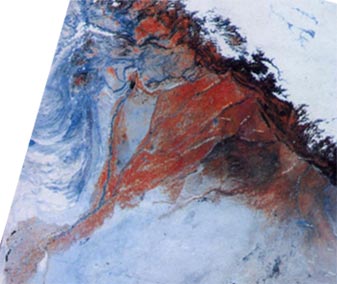
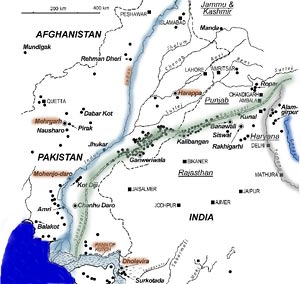
The satellite image on the left is drawn in the map on the right, showing the Indus River
in blue, the dry Sarasvati River basin in green and archaeological sites as black dots.
What is perhaps most puzzling about it is the fact that all major sites spread over this immense belt went into sudden decline and disappeared more or less simultaneously. The renowned archeologist, S.R. Rao, probably the foremost authority on Harappan archeology recently wrote:

From this it is apparent that the Harappans, though inhabiting a vast area, fell victim to a sudden calamity which forced them to seek shelter in other parts of ancient India. The usual explanation found in history books is that the inhabitants of the Harappan cities were driven out by the invading Aryans. However it is now recognized by scholars that the Aryan invasion theory of India is a myth that owes more to European politics than anything in Indian records or archaeology. (The politics of History, The Hindustan Times, Nov. 28 1993).
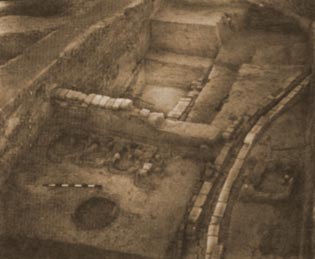 The evidence against any such invasion is now far too strong to be taken seriously. To begin with, sites spread over such a vast stretch, measuring well over a thousand miles across would not have been all abandoned simultaneously due to the incursion of nomadic bands at one extremity. Further, there is profuse archaeological evidence including the presence of sacrificial altars that go to show that the Harappans were part of the Vedic aryan fold. As a result, it can safely by said that the Vedic age also ended with the Harappan civilization.
The evidence against any such invasion is now far too strong to be taken seriously. To begin with, sites spread over such a vast stretch, measuring well over a thousand miles across would not have been all abandoned simultaneously due to the incursion of nomadic bands at one extremity. Further, there is profuse archaeological evidence including the presence of sacrificial altars that go to show that the Harappans were part of the Vedic aryan fold. As a result, it can safely by said that the Vedic age also ended with the Harappan civilization.
From all this it is clear that the loss of these sites must have been associated with some natural catastrophe. A few scholars have pointed to evidence of frequent floods to account for the abandonement. But, floods are invariably local in nature and do not cause the collapse of a civilization over a vast belt. People adapt. Floods bring death but they also sustain life. Some of the most flood prone areas of the world - like the Nile valley, Bengal and the Yangtse valley, in China - area also among the most densely populated. It is the loss of water or dessication that causes massive disruptions on the scale witnessed at the end of the Harappan civilization. Thanks to the latest data from two major archaeological and satellite based studies, we now know that this is exactly what happened. It was ecological change that ended the great civilization not only in India but over a vast belt that included Mesopotamia, Egypt, and the Aegean.
On the basis of extensive explorations carried out in Northern Mesopotamia, a joint French-American team led by H. Weiss of Yale University has determined that most of the old world civilization were severely affected by a prolonged drought that began about 2200 B.C. and persisted for about 300 years. The most drastically hit region seems to have been the Akkadian civilization neighbouring India. The drought may have been triggered by massive volcanic eruptions. According to the findings of this historic study concluded only recently:
"At approximately 2,200 B.C., occupations of Tell Leilan and Tell Brak (in Northern Mesopotamia) were suddenly abandoned...a marked increase in aridity and wind circulation, subsequent to a volcanic eruption, induced considerable degradation in land use conditions.... this abrupt climatic change caused abandonement of Tell Leilan, regional desertion, and collapse of the Akkadian empire based in southern Mesopotamia. Synchronous collapse in adjacent regions suggests the impact of abrupt climatic change was excessive."
An end uncannily like that of the Harappans. The authors of this momentous study note that the collapse of the Akkdians more or less coincided with similar climate change, land degradation and collapse noted in the Aegean, Palestine, Egypt, and India. The date of 1900 BCE given by S.R. Rao for the collapse of the Harappans should be seen as approximate. More accurate methods are now available that show this date to have been sometime before 2000 BCE, and they are well within the calibration error of radiocation and other scientific dating techniques.
The basic point is: as a result of several independent explorations conducted over a vast belt from southern Europe to India, it is now clear that civilizations over a large part of the ancient world were brought to a calamitous end by an abrupt climate change on a global scale. To attribute a global calamity of such colossal magnitude to nomadic 'Aryan' tribes is simplistic in the extreme.
These discoveries should help put an end to all speculation regarding the Aryan invasion as the cause of breakup of the Harappan civilization. On the other hand we now know that the Vedic civilization far from coming into existence after the Harappan, in fact ended with it; the mature Harappan civilization was the last glow of the Vedic age. This recognition has brought about a fundamental change in perpective in the history and chronology of not only ancient India, but also nearly all ancient civilizations. It helps answer several fundamental questions about the source of the Harappans - they should now be called the Vedic Harappans - and the age of the Rig Veda. Thanks to recent discoveries about the mathematics and geography of Vedic India, we are now in a position to answer both questions.

![]() This shift in perspective, that the Harappan civilization came at the end of the Vedic age also helps explain a major puzzle; the technological basis for this great civilization. Even a superficial study of Harappan sites suggests that its builders were extremely capable town planners and engineers. And this requires a sophisticated knowledge of mathematics, especially geometry. Elaborate structures like the Great Bath of Mohen-jo-daro, the Lothal harbor or the citadel at Harappa are inconcievable without a detailed knowledge of geometry.
This shift in perspective, that the Harappan civilization came at the end of the Vedic age also helps explain a major puzzle; the technological basis for this great civilization. Even a superficial study of Harappan sites suggests that its builders were extremely capable town planners and engineers. And this requires a sophisticated knowledge of mathematics, especially geometry. Elaborate structures like the Great Bath of Mohen-jo-daro, the Lothal harbor or the citadel at Harappa are inconcievable without a detailed knowledge of geometry.
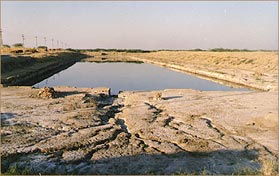
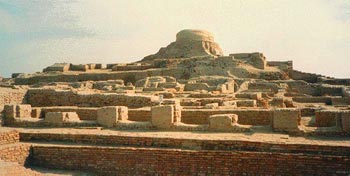
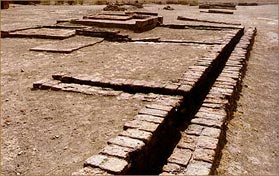 The world had to wait 2000 years more, till the rise of the Roman civilization for sanitation and town planning to reach a comparable level. The question is: where did the Harappans get the necessary mathematical and engineering knowledge? History books tell us that Indians borrowed their geometry from the Greeks. This is absurd. The Harappans must have had the neccessary technical knowledge at least 2,000 years before the Greeks. Without it the civilization would never have seen the light of day. It is as simple as that.
The world had to wait 2000 years more, till the rise of the Roman civilization for sanitation and town planning to reach a comparable level. The question is: where did the Harappans get the necessary mathematical and engineering knowledge? History books tell us that Indians borrowed their geometry from the Greeks. This is absurd. The Harappans must have had the neccessary technical knowledge at least 2,000 years before the Greeks. Without it the civilization would never have seen the light of day. It is as simple as that.
But once we recognise that Harappan archaeology belongs to the closing centuries of the Vedic age, the mystery vanishes. The late Vedic literature includes mathematical texts known as the Sulba-sutras which contain detailed instruction for the building of sacrificial altars. After a monumental study spanning more than 20 years, the distinguished American mathematician and historian of science, Abraham Seidenberg showed that the Sulba-sutras are the source of both Egyptian and old Babylonian mathematics. The Egyptian texts based on the Sulba-sutras go back to before 2,000 BCE. This provides independent comfirmation that Indian mathematical knowledge existed long before that date, ie, during the height of the Harappan era. For further mathematical evidence and quotations please see: Scientific Verification of Vedic Knowledge.
 The sulba-sutras are part of the vedic religious literature known as the Kalpasutras. They were created originally to serve as technical manuals for the design and construction of Vedic altars. As previously noted, Harappan sites contain many such altars, a fact that supplies a link between Vedic literature and Harappan archaeology. It serves also to show that the vedic literature could not have been brought in by any invaders - they were needed for building the altars that are very much part of the Harappan archaeology! The sulba-sutra are the oldest mathematical texts known. A careful comparison of the sulba-sutras with the mathematics of Egypt and old Babylonia led Abraham Seidenberg to conclude:
The sulba-sutras are part of the vedic religious literature known as the Kalpasutras. They were created originally to serve as technical manuals for the design and construction of Vedic altars. As previously noted, Harappan sites contain many such altars, a fact that supplies a link between Vedic literature and Harappan archaeology. It serves also to show that the vedic literature could not have been brought in by any invaders - they were needed for building the altars that are very much part of the Harappan archaeology! The sulba-sutra are the oldest mathematical texts known. A careful comparison of the sulba-sutras with the mathematics of Egypt and old Babylonia led Abraham Seidenberg to conclude:
"... the elements of ancient geometry found in Egypt and old Babylonia stem from a ritual system of the kind found in the Sulba-sutras."
What is interesting is that the origins of ancient mathematics are to be found in religion and ritual. So the great engineering feats of the Harappans can be seen as secular off-shoots of the religious mathemtics found in vedic literature. This can in a way be compared to the history of books and publishing, The first books printed were Bibles, like the Gutenberg bible; but the technique of printing soon transcended its original niche and led to an explosion of knowledge that made possible the European renaissance. Similarly, the 'ritual mathematics' in the Sulba-sutras led eventually to the purely secular achievements of the Harappans like city planning and the design of harbours.
So the vedic civilisaion ended well before 2,000 BCE, with the ending of the Harappans following the Great Drought. The next question is, when did it actually begin. Here we cannot be certain, although some experts on Vedic astronomy claim to be able to find statements in the Rig Veda that point to dates like 6,500 BCE and beyond. I feel it safer at this time to be conservative and stick to reliable archaeological evidence. Although some sites dating to almost 7,000 BCE have been found, I believe that a lot more supporting data must be found before such dates can be accepted. But thanks to new data made available by the French SPOT satellite and the Indo-French field study, we can definitely conclude that the Rig-Veda describes the geography of North India as it was long before 3,000 BCE. The clinching evidence is provided by the fate of the Saraswati river.
It is well known that in the Rig Veda, the greatest and the holiest of rivers was not the Ganga, but the now dry Saraswati. The Ganga is mentioned only once while the Saraswati is mentioned some 50 tomes. There is a whole hymn devoted to her. Extensive research by the late Dr. Wakankar has shown that the Saraswati changed her course several times, going completely dry around 1900 BCE. This date may now have to be moved back by a few centuries in light of what we now know about the disappearence of the neighbouring Akkadians. In any event we know now that which Dr. Wakankar did not, that the Saraswati described in the Rig Veda belongs to a date long before 3,000 BCE. The Rig Veda calls the Saraswati the greatest of rivers (Naditame) that flowed from "the mountain to the sea". The latest satellite data combined with field archaeological studies have shown that the Rig Vedic Saraswati had stopped being a perrenial river long before 3,000 BCE.
As Paul-Henri Francfort of CNRS, Paris recently observed,
"...we now know, thanks to the field work of the Indo-French expedition that when the protohistoric people settled in this area, no large river had flowed there for a long time."
 The protohistoric people he refers to are the early Harappans of 3,000 BCE. But satellite 'photos show that a great prehistoric river that was over 7 kilometers wide did indeed flow through the area at one time. This was the Saraswati described in the Rig Veda. Numerous archaeological sites have also been located along the course of this great prehistoric river thereby confirming Vedic accounts. The great Saraswati that flowed "from the mountain to the sea" is now seen to belong to a date long anterior to 3,000 BCE. This means that the Rig Veda describes the geography of North India long before 3,000 BCE. This is further supported by the fact that the Drishadvati river, also described in the Rig Veda, had itself gone dry long before 3,000 BCE. All this shows that the Rig Veda must have been in existence no later than 3,500 BCE. There is other evidence from metallurgy and astronomy that lend further support for this date.
The protohistoric people he refers to are the early Harappans of 3,000 BCE. But satellite 'photos show that a great prehistoric river that was over 7 kilometers wide did indeed flow through the area at one time. This was the Saraswati described in the Rig Veda. Numerous archaeological sites have also been located along the course of this great prehistoric river thereby confirming Vedic accounts. The great Saraswati that flowed "from the mountain to the sea" is now seen to belong to a date long anterior to 3,000 BCE. This means that the Rig Veda describes the geography of North India long before 3,000 BCE. This is further supported by the fact that the Drishadvati river, also described in the Rig Veda, had itself gone dry long before 3,000 BCE. All this shows that the Rig Veda must have been in existence no later than 3,500 BCE. There is other evidence from metallurgy and astronomy that lend further support for this date.

![]() What does this all mean? In our book, Vedic Aryans and the Origins of Civilisation, David Frawley and I have shown that the Rig Veda belongs to an earlier layer of civilization before the rise of the civilization of Egypt, Mesopotamia, and the Indus Valley (Harappa). This calls for a fundamental change in our idea of Mesopotamia as the cradle of civilization. In the same book, on the basis of ecology and ancient literature, it is also suggested that the Rig Vedic aryans were the beneficiary of an age of abundance in north India, brought about by the melting of the ice caps at the end of the last Ice Age. The last Ice age ended in about 8,000 BCE. For the next several thousand years, many areas that are now arid, like Rajasthan, Sind, Baluchistan - were fertile and supported agriculture. This of course was due to the discharge of waters in the form of numerous streams from melting ice caps. This is apparent from the French satellite study. In the course of time, the ice caps accumulated during the long ice age came to be depleted and aridity began to spread across the sub continent. This of course culminated in the great drought of 2,200 BCE that wrought havoc with the civilizations of the ancient world.
What does this all mean? In our book, Vedic Aryans and the Origins of Civilisation, David Frawley and I have shown that the Rig Veda belongs to an earlier layer of civilization before the rise of the civilization of Egypt, Mesopotamia, and the Indus Valley (Harappa). This calls for a fundamental change in our idea of Mesopotamia as the cradle of civilization. In the same book, on the basis of ecology and ancient literature, it is also suggested that the Rig Vedic aryans were the beneficiary of an age of abundance in north India, brought about by the melting of the ice caps at the end of the last Ice Age. The last Ice age ended in about 8,000 BCE. For the next several thousand years, many areas that are now arid, like Rajasthan, Sind, Baluchistan - were fertile and supported agriculture. This of course was due to the discharge of waters in the form of numerous streams from melting ice caps. This is apparent from the French satellite study. In the course of time, the ice caps accumulated during the long ice age came to be depleted and aridity began to spread across the sub continent. This of course culminated in the great drought of 2,200 BCE that wrought havoc with the civilizations of the ancient world.
In summary, all this new evidence, when examined in the light of science, gives a totally different picture of the ancient world. The rise and fall of the Vedic civilization of which the Harappan was a part can be seen to have resulted from the vagaries of nature, inseparably bound to the boom and bust ecological cycle that followed the last ice age. The vedic age and more specifically the Rig Veda were the beneficiaries of nature's bounties - a unique age in water abundance in the wake of the last ice age. Its end was also brought about by nature in the form of a killing drought. The Harappan civilization was its twilight. And this is the verdict of science - what nature giveth, nature also taketh away.
This Article Reprinted With Permission of Author
